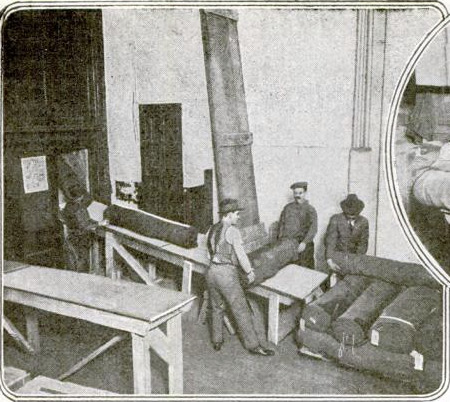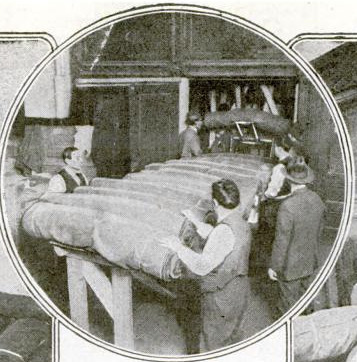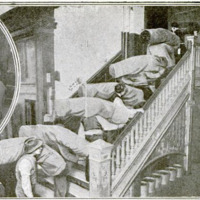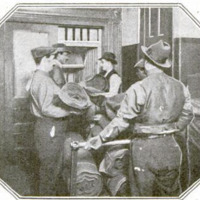How the bolts of cloths, used to make uniforms for soldiers, were stored and moved in the Depot Quartermaster of New York
Item
-
Title (Dublin Core)
-
How the bolts of cloths, used to make uniforms for soldiers, were stored and moved in the Depot Quartermaster of New York
-
Article Title and/or Image Caption (Dublin Core)
-
Providing Rapid Transit for Bolts of Cloth
-
extracted text (Extract Text)
-
WHEN the United
States entered
the great war in 1917,
the Quartermaster-General found it necessary to establish
depots for the enormous quantities of supplies needed for the
army. In New York the Depot Quartermaster rented a
puilding fifteen stories high for the
storage of the thousands of bolts of
cloth which had accumulated, and
which were to be made into uniforms
for the soldiers. The building was not
equipped with a freight elevator. As
it would not have been feasible to
carry the heavy bolts of cloth up and
down the stairs some means for
transporting them had to be devised.
The official in charge of the ware-
house solved the problem by installing
a cable hoist with hooks in the shaft
of one of the passenger lifts for carrying
the bolts to the different floors, and a
chute in the shaft of another passenger
lift for sliding the bolts from the upper
floors to the ground floor.
As the space in the
shaft was limited, the
chute was built in zig-
zag form. A bolt of cloth placed in the chute at any
floor, slid down the smooth surface of the chute at
an angle of 45 degrees, then dropped a few feet to the
next chute going in the opposite di-
rection, and so on until it reached the
bottom.
In dropping from one chute to the
next below the bolt turned over. This
had the advantage of preventing the
overheating and burning of the cloth
by friction while it is sliding down at
a great speed.
It required only a few seconds for a
bolt of cloth to slide from the top floor
of the building to the ground floor.
Thus, as frequently happens, a little
thought saved many hours of valuable
time.
This is only one of very many les-
sons in economy that we learned during
the rush of war production.
-
Language (Dublin Core)
-
eng
-
Date Issued (Dublin Core)
-
1919-12
-
pages (Bibliographic Ontology)
-
47
-
Rights (Dublin Core)
-
Public domain (Google digitized)
-
Archived by (Dublin Core)
-
Davide Donà
-
Alberto Bordignon (Supervisor)
 Popular Science Monthly, v. 95, n. 5, 1919
Popular Science Monthly, v. 95, n. 5, 1919








